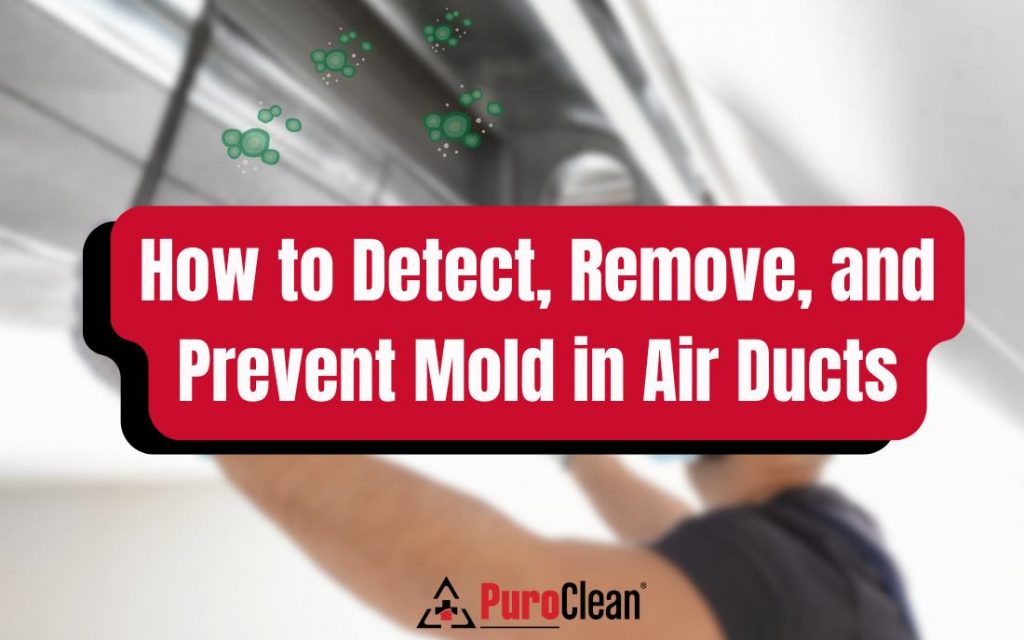
Mold in air ducts is one of those hidden issues that can go unnoticed for far too long. We’ve worked with countless homeowners who were unaware of how much this problem was affecting their home’s air quality and even their health. It’s unsettling to think that the system designed to circulate clean air could be distributing harmful spores instead. But the good news is, it’s a manageable issue once you know what to look for.
In this blog, we’ll explore how to spot the early signs of mold in air ducts, how to remove it, and, most importantly, how to stop it from coming back.
Mold in Air Ducts
Mold in air ducts is basically mold growing inside your home’s heating and cooling system. This happens when the ducts get damp or moist, which creates the perfect spot for mold to start growing. Since mold spores are always floating around in the air, they can settle in the ducts, especially when there’s moisture, and begin to spread. Over time, this can lead to poor air quality and even health issues. To address this, it’s important to seek professional mold removal services to ensure your ducts are properly cleaned and your home’s air remains safe to breathe
How Does Mold Get into Air Ducts?
1. Moisture Buildup: Mold loves moisture. If there’s a leak in the ducts or if condensation builds up, it creates a damp environment where mold can grow. This is especially common in humid areas or if your ducts aren’t well insulated.
2. Dirty Air Filters: If your air filters are dirty or clogged, airflow gets blocked, and dust and moisture can build up in the ducts. The combination of dust and moisture makes it easy for mold to grow.
3. Leaky Ducts: If your ducts have leaks, humid air can get inside and mix with the cool air from your HVAC system. This causes condensation, which leads to—you guessed it—mold.
4. Skipping HVAC Maintenance: Without regular maintenance, dust, dirt, and moisture can build up in the ducts. If these aren’t cleaned out, mold will find a way to grow in there.
5. Water Damage or Flooding: If your home has had a flood or water damage, moisture can get into the ducts. If the ducts aren’t properly dried out afterward, mold can take over.
How to Detect Mold in Air Ducts
Detecting mold in your air ducts is important to maintain a healthy home environment, but it’s not always easy to spot. Mold often hides in places you can’t see, like inside your HVAC system, but there are some common signs that can alert you to a potential problem. Here’s a simple list to help you identify whether mold might be lurking in your air ducts:
Musty smell: A persistent musty odor when your heating or cooling system is running.
Visible mold: Mold spots on or around the vents, usually black, green, or white.
Allergy symptoms: Increased coughing, sneezing, or respiratory issues among household members.
Excess dust: Unusual buildup of dust near your vents.
Humidity: Condensation or higher-than-usual humidity around the ducts.
HVAC struggles: The system seems to work harder or less efficiently than normal.
- Musty smell: A persistent musty odor when your heating or cooling system is running.
- Visible mold: Mold spots on or around the vents, usually black, green, or white.
- Allergy symptoms: Increased coughing, sneezing, or respiratory issues among household members.
- Excess dust: Unusual buildup of dust near your vents.
- Humidity: Condensation or higher-than-usual humidity around the ducts.
- HVAC struggles: The system seems to work harder or less efficiently than normal.
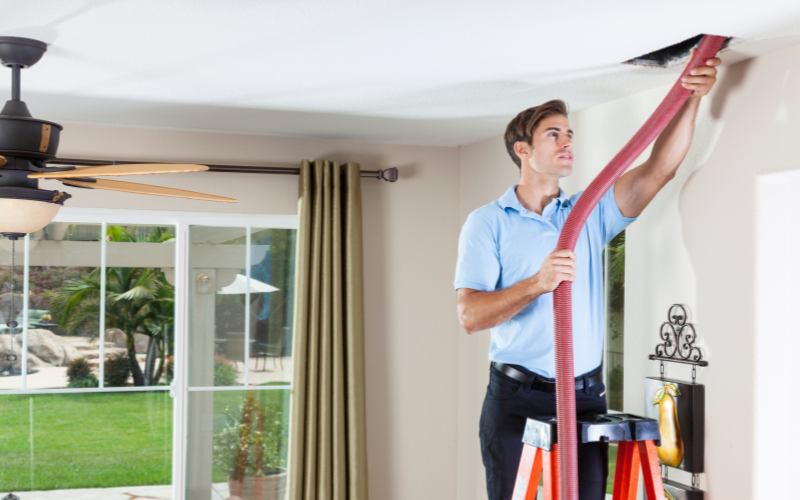
How to Remove Mold in Air Ducts
Removing mold from air ducts is not a simple task, and in most cases, it’s best to hire a professional to ensure the job is done safely and thoroughly. Mold spores can be hazardous to your health, and if the problem isn’t fully addressed, the mold can easily return. However, if you prefer to understand the process or want to be prepared before calling a professional, here’s a step-by-step guide on what you should expect. Keep in mind that handling this on your own can be risky, so professional help is highly recommended.
Step 1: Turn off the HVAC system
Before any inspection or cleaning begins, it’s crucial to turn off your HVAC system. This prevents mold spores from being circulated throughout your home while the ducts are being handled. If the HVAC system is running during cleaning or inspection, it could spread mold to other areas of the house, making the problem worse. Shutting it off ensures that the mold stays contained within the ducts and reduces the risk of further contamination.
Step 2: Call a professional
Mold removal in air ducts is a job best left to experts. Contact a licensed HVAC specialist or mold remediation expert to handle the issue. They have the necessary tools and equipment to clean and remove mold safely and thoroughly. Professionals use special cleaning agents, air scrubbers, and vacuums designed to remove mold spores without spreading them. They also have the training to address any underlying moisture problems that caused the mold in the first place, ensuring a long-term solution.
Step 3: Inspect the ducts (if safe)
If you want to check for mold before the professional arrives, it’s essential to protect yourself. Wear protective gear like a mask (preferably N95) to avoid inhaling mold spores, and use gloves to prevent direct contact. Remove the vent covers carefully and use a flashlight to look inside the ducts. Mold typically appears as black, green, or white spots, often in moist areas. However, avoid touching or disturbing the mold. Moving or poking at it could release spores into the air, which can spread the problem and increase health risks. It’s better to leave thorough inspection and handling to the professionals.
Step 4: Avoid DIY cleaning
While it might be tempting to clean the mold yourself, this is not recommended. Scrubbing mold can cause spores to become airborne, which will not only spread mold to other areas of your home but also increase the health risks to you and your family. Mold remediation experts use specialized cleaning products, vacuums with HEPA filters, and containment techniques to ensure that the mold is safely removed without contaminating other parts of the home. DIY methods might not fully remove the mold, allowing it to come back later.
Step 5: Discuss mold prevention with your expert
Once the mold is removed, it’s important to prevent it from coming back. Talk to the professional about applying a mold inhibitor to the ducts, which helps stop future mold growth. Also, discuss any moisture issues that might have led to the mold in the first place, such as leaks, poor insulation, or condensation buildup in your HVAC system. Mold thrives in damp environments, so addressing these issues is key to keeping your ducts mold-free long-term.
Step 6: Replace air filters
Your air filters play a big role in keeping your home’s air clean and preventing mold growth. After mold remediation, professionals will likely recommend replacing your HVAC filters. Dirty or clogged filters can trap moisture and dirt, which provides an ideal environment for mold to grow. By installing clean filters, you improve the airflow and help maintain a healthier environment, reducing the risk of mold in the future.
How to Prevent Mold in Air Ducts
Preventing mold in your air ducts is important for keeping your home’s air clean and your HVAC system running smoothly. Mold grows easily in dark, damp places, and air ducts are a perfect spot if they aren’t taken care of properly. The good news is that you can stop mold from growing by taking a few simple steps. By controlling moisture, improving ventilation, and keeping up with maintenance, you can keep mold out and ensure your home’s air stays fresh. Here are some easy tips to help prevent mold in your air ducts:
- Control moisture by fixing leaks, ensuring proper insulation, and preventing condensation in and around your ducts.
- Improve ventilation by using exhaust fans or dehumidifiers, especially in humid areas like kitchens and bathrooms.
- Use a high-quality air filter in your HVAC system and replace it regularly to capture mold spores and keep your ducts clean.
- Schedule regular HVAC maintenance to ensure the system is working efficiently and to address any potential moisture issues.
- Keep your air ducts clean by periodically removing dust and debris that can mix with moisture and lead to mold growth.
- Monitor humidity levels in your home, keeping them between 30% and 50% to create an environment where mold is less likely to thrive.
- Ensure proper drainage in your HVAC system’s drainage pan, making sure there is no standing water that can promote mold growth.
- Apply a mold inhibitor to your air ducts during maintenance to create a protective barrier that prevents mold from growing.
Frequently Asked Questions
Can mold in air ducts make me sick?
Yes, mold in air ducts can cause health issues, especially for people with allergies, weakened immune systems, or asthma. Mold spores can actually circulate through your home and trigger respiratory problems, headaches, sneezing, coughing, and other allergy-like symptoms.
How often should air ducts be inspected for mold?
It’s a good idea to have your air ducts inspected at least once a year, especially if you live in a humid climate or if you’ve had issues with moisture in your home. Regular HVAC maintenance can help catch mold issues early.
Can mold in air ducts spread to other areas of the house?
Yes, mold in air ducts can spread throughout the home via the HVAC system. When the system runs, it can circulate mold spores into different rooms, making it a widespread issue that affects the entire house.
Need Help with Mold Removal in Zephyrhills? Call PuroClean Zephyrhills Now!
Keeping your air ducts mold-free is easier than you might think. By focusing on moisture control, good ventilation, and regular cleaning, you can keep your home’s air clean and safe. If mold does become an issue, don’t hesitate to reach out to a professional. It’s all about staying ahead of the problem and making sure your home stays a healthy place to live. PuroClean Zephyrhills is here to help with expert mold removal services. Schedule an appointment now!
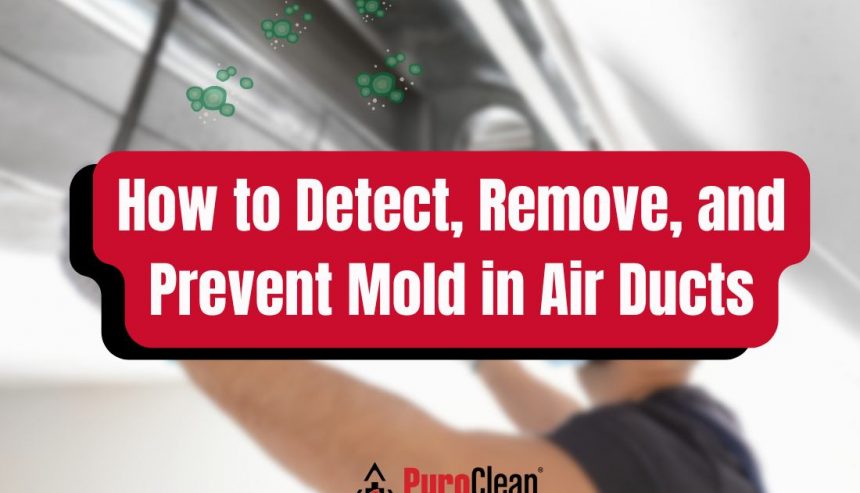
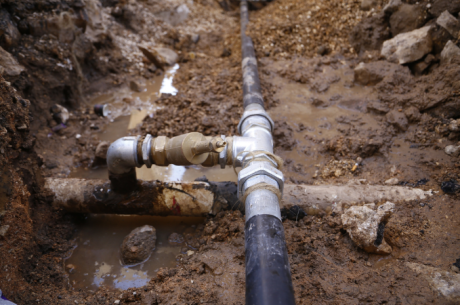
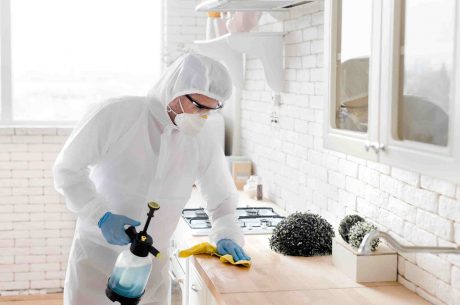
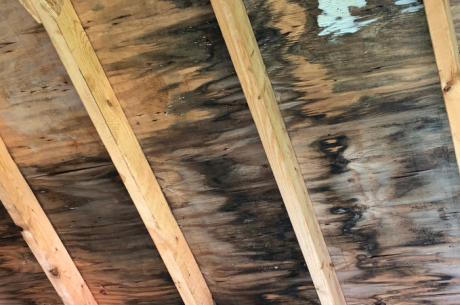
 PuroClean Certified Restoration Specialists
PuroClean Certified Restoration Specialists